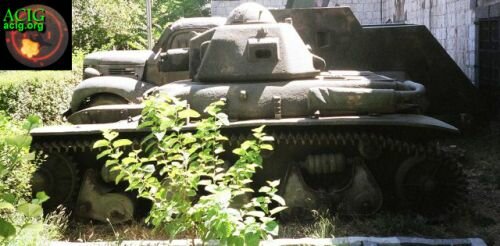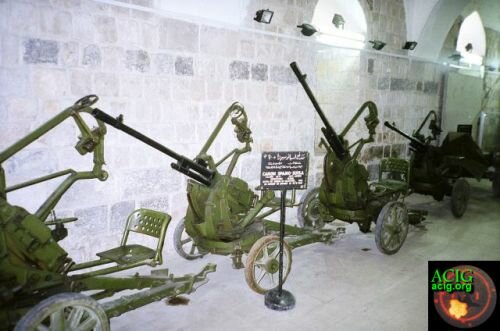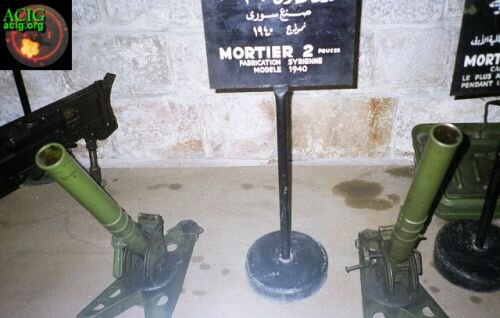From ACIG.org
Middle East Database
Damascus Calling
By Tom Cooper
Jul 8, 2004, 08:14
 |
| Syrian Arab Air Defence Force SA-6 at Teshreen Panorama. (All photos: Tom Cooper collection, copyright 2004) |
In the West, Syria is usually described as a "staunch supporter of international terrorism", one of the Arab countries which is almost completely cut off from the outside world, and where the security measures should be so tight that any attempts of research about the military can only end in a disaster. There are many who say that travelling there is too dangerous – foremost because of supposed “terrorist activity”; apparently, Damascus should be a place where there is an al-Qaida or some other kind of terrorist lurking for Westerners behind each and every corner.
Forget about all of this right from the start: Damascenes are endlessly friendly and happy to help. Far too often one will find himself ashamed by their hospitality. There is no trace of any terrorists there (except you consider the driving style of all too many Damascens as "terrorism"), and even the few who attempt to enter the country are usually immediately arrested. Except for – understandable – security measures one can’t but feel very safe in the main city of Syria. To some Western visitors, of course, guards armed with Kalashnikovs in front of every important building around the city might appear as threatening, but given the violent nature of the whole Middle East, and what this author experienced in several neighbouring states, I can ascertain that it's actually good they are where they are, as well as that there is nothing to be afraid of in Syria.
Clearly, there is a large – and actually understandable - number of “off limits” areas in and around Damascus in which taking photographs can get anybody into a deep trouble with local authorities. Overall, however, moving around this huge and vivid city is free and military enthusiasts get a lot to see – besides plenty of excellent food, countless “souvenir” shops, and an endless number of fascinating historical sites, of course!
Teshreen Panorama
For students of modern warfare there are two major sites in Damascus a visit to which is a “must”: “Teshreen Panorama”, and “Military Museum”.
The former is situated in north-eastern Damascus, relatively close to Mount Kas’yun, and foreign visitors might find it problematic to catch a taxi-driver ready to bring them there. This has to do with nothing else but the fact that Damascene taxi-drivers prefer to drive to specific parts of the city, depending on the time of the day. Consequently, one has to lurk for one ready to drive to the Panorama on the right place in Damascus and on the “correct” side of the street, and then also negotiate about the price. Well, taxi-drivers are "strange" people regardless where one goes: everybody knows, meanwhile, that those in New York come from Jupiter (or was it Saturn?), so I guess those in Damascus come from Uranus - at least that's my guess. Bear also in mind that the Panorama is open between 10:00hrs and 12:00hrs in the morning, and 16:00 and 18:00hrs in the afternoon only, as well as under military control (see bellow for explanation why), so that one not only has to time his visit properly, but also all the visitors have to register on the entrance and must wait for a guide before starting their visit.
Teshreen Panorama was established as a memorial for the war in 1973 – the “Teshreen War”, as called by the Syrians – and bristles with corresponding hardware put to a show, even if one will find some hardware from the war in Lebanon, in 1982, there and a better part of it is also used for other purposes, including a sizeable collection in memory of the late President al-Assad.
Entrance to Teshreen Panorama costs SYP 500,-- - for foreigners (cca. USD 10,--); Syrians pay “only” SYP 50,--. A visit is more than worth this investment: the hardware placed outside the main building is in a beautiful condition, and at the right time of the day a good photographer will enjoy the visit endlessly. Syrian equipment is placed to the right of the main gate, Israeli to the left; in the middle there is a large main building, constructed in the form of a medieval citadel. Given the main interest of our visitors, in this report I’ll concentrate on what can be found outside the main building (inside of it there is no “heavy hardware” as such, even if aviation history, tank and military enthusiasts will find it highly interesting nevertheless).
 |
| Syrian Army BTR-60: all the vehicles at the Teshreen Panorama - regardless if Syrian or Israeli - are in excellent condition. In fact, the author could smell fuel and lubricants! |
 |
| Syrian Army BMP-1 APC in splendid condition and showing the details of the typical Syrian Army camouflage pattern to advantage. |
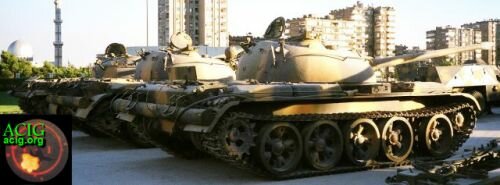 |
| A T-54, T-55, and T-62 of the Syrian Army are also shown at Teshreen Panorama, even if somewhat hidden behind other exponates. |
 |
| Also in excellent condition was this early ZSU-23-4. |
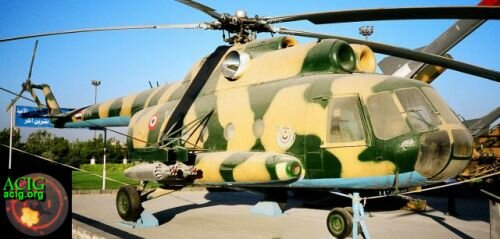 |
| A relatively new addition to Teshreen Panorama was this Mi-8 helicopter of the Syrian Arab Air Force. Sadly, it shows no serials or other markings but Syrian flash on the fin and the SyAAF symbol on the side. |
 |
| Above and bellow: one the most interesting exponates at the Teshreen Panorama is this captured Israeli M-48A3 Magach-3 MBT, equipped with "Blazer" ERA. The vehicle was one of several such tanks from the 362 Battalion IDF captured by Syrians during the battle of as-Sultan Yac'ub at Tanta, in the night from 10 to 11 June 1982. |
 |
| Left-hand view at the same M-48A3 Magach-3: it is still in excellent condition, with all equipment and markings as they where when the tank was captured. |
 |
| Another captured M-48A-3 displayed at Teshreen Panorama was this example, still equipped with the 90mm gun and old commander cupola. |
 |
| Another surprise at Teshreen Panorama was this French-made AMX VCI armoured personnel carrier. Exact circumstances under which this vehicle was captured remain unknown: Israel had a number of AMX-13 light tanks in the 1960s, which are using the same chassis, but there is no confirmation for VCI to have ever been used by the IDF. 75 AMX VCI, however, are known to have been used by the Lebanese Army in the 1970s. |
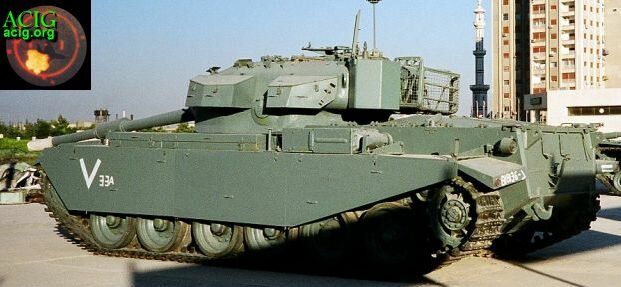 |
| Israeli Centurion ("Sho'ot") as seen at Teshreen Panorama; most likely, the vehicle belonged to the 188th "Barak" Armoured Brigade, and was captured in 1973. |
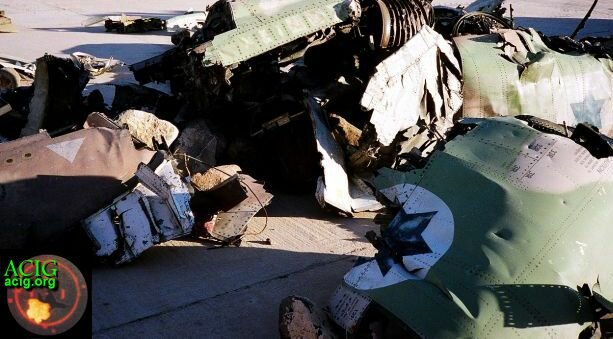 |
| Remnants of an IDF/AF F-4E Phantom II, as displayed at Teshreen Panorama. Sadly, none of the parts is displaying details that would be sufficient to clearly identify this Phantom. Nevertheless, details of left and right intake and the rear cockpit can be made out on this photograph. |
 |
| Also shown at Teshreen Panorama is this "high performance" drop tank, as used on F-15s and F-4Es already since the late 1970s. Most likely, it was found somewhere in Lebanon - if together with the wreckage of the Phantom shown above, that remains unknown. |
Military Museum
The Military Museum of Damascus is located in the centre of the city, so finding a taxi that would bring one there is easy. Entrance costs SYP 5,--. At such rate, and given what one gets to see there, I am ready to openly admit I’d be more than ready to pay the same sum like at Panorama if only being permitted to take photographs in specific parts of the museum!
 |
| Although photographing is not permitted in any of the halls in the Military Museum in Damascus, this author could not resist in several cases: in one of the halls there are plenty of different Syrian military flags, including these two, the nearest of which is the old SyAAF flag, and the one right behind it is the new version. |
The Military Museum consists of several buildings and halls, and is also under a military control, so don’t be surprised on finding it guarded by armed guards. These are all very friendly and ready to help - even if I can’t explain here to which degree exactly (for the sake of their own safety).
In total, one gets a lot to see here: from old SyAAF aircraft, via captured Israeli vehicles and tanks, down to highly interesting details about the Syrian Arab Air Force. There are several problem areas in this museum, however. The main is that installation was foremost established and maintained for local visitors. The entrance is so cheap to enable all the Syrians to visit it, but this museum is obviously left without sufficient money to properly maintain its exponates. For this reason most of the hardware that can be found there is in not as good a condition as on the Panorama. The other “problem” is that most of the aircraft are exposed in the “garden” of the Museum, right between tall threes, so that taking good photographs of them is very problematic. There are two final troubles: photographing is not permitted in any of the halls – which is pitty, then especially the one about the war in 1973 is bristling with highly interesting hardware and photographs of historic importance. And, almost all the inscriptions describing the hardware are in Arabic, or poor French, which means that without the knowledge (or at least the most basic understanding) of either of the two languages no visitor can properly understand the importance of what is shown there. The last is especially important because one can find immense amounts of highly important facts about officers and pilots of the Syrian Arab Air Force in this museum!
Nevertheless, a visit to the Military Museum in Damascus is highly recommended - not only to students of modern warfare, but those of mediaval Crusades as well: the exposed hardware is worth much, and ranges from mediaval sabres, armour and siege tools, via Free-French and Israeli armoured trucks, light tanks, plenty of various artillery pieces (some dating back to WWI), to a whole Su-7BMK, and a room full of Syrian military flags and insignia!
 |
| Above and bellow: two Free-French armoured trucks and a Renault light tank captured from French Forces during the short war of independence, in 1946. These historic vehicles were obviously frequently overseen by any Western visitors of the Military Museum in Damascus. Seen in poor condition, back in 2004, they are currently being overhauled - together with a better part of the Museum. |
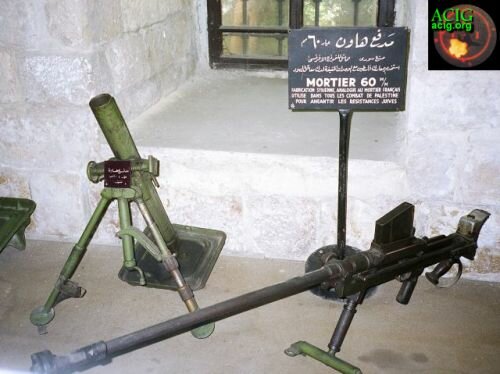 |
| Above and bellow: another "surprise" one can find in the Military Museum is a hall with such weapons like light artillery pieces and machine guns. Between others, there are also several Hispano-Suisa 20mm anti-aircraft cannons and 2-pounds - as well as 60mm - mortars of Syrian production, used during the war in 1948. |
 |
| Above and bellow: there are two captured Israeli M-3 half-tracks at the Military Museum in Damascus. Sadly, only the markings on this examples can be clearly seen, and author is keen to hear any details about their possible backgrounds. |
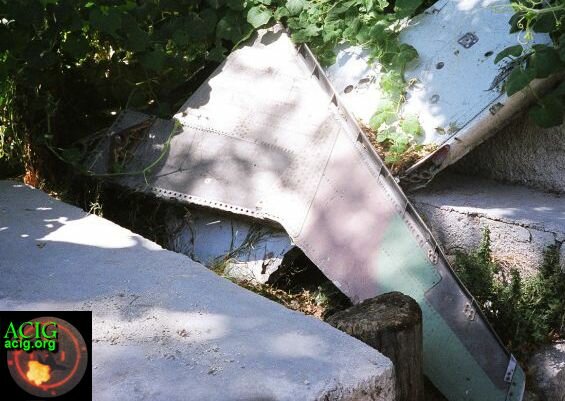 |
| In total one can find wreckage of two IDF/AF F-4Es in the Military Museum of Damascus: two, serialled 123 (with a visible insignia of the No.69 Sqn IDF/AF) and 151 (or 161). Both of these are shown together with a considerable number of other parts, including M-61A-1 Vulcan guns. Sadly, they are displayed in a hall where photographing is not permitted (and almost impossible - due to two guards), together with the wreckage of a Choukar UAV No.67, and a Ryan Firebee No.13. The same hall also has two highly interesting pictures. One is showing an IDF/AF F-4E being pursued by an SyAAF MiG-17PF at a very low level over Golan, and the other shows an IDF/AF F-4E dropping bombs on Damascus, in 1973. |
© Copyright 2002-3 by ACIG.org
|
















